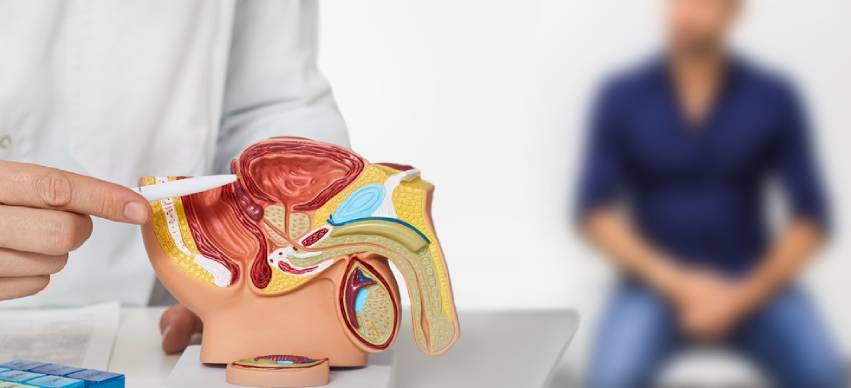Nanoparticle Therapy – An Emerging Cancer Treatment
5 Min Read


Penis health is an integral part of your overall well-being. Aside from its relevance to sexual activities and reproductive functions, your genital health can also affect your sense of comfort, self-esteem, and ability to perform daily tasks. Because of its importance to your wellness, you'll need to take proper care of your genitalia and address any health issues that may arise.
A healthy penis must be free of discoloration, odor, or discharge. If you notice any of these symptoms, including pain or discomfort, in your genital region, it may be a sign of an underlying health problem.
Also, you must consult your doctor if you notice any spots and lumps around the shaft, head, and testicular region of the penis, as these unusual growths may also signify disease or infection.
If you'd like to know more about penis spots and lumps and their corresponding treatments, continue reading this article.
1. Pearly Penile Papules
Pearly penile papules, or PPP, are small lumps that usually grow surrounding the head of the penis. They're commonly yellow, white, or flesh-colored, making the skin rough. While they make the penile skin look unusual, PPP is not an STD (Sexually Transmitted Disease). It's non-contagious and doesn't cause pain or discomfort.
However, some men feel conscious about the effects of PPP on the appearance of their genital region, so they seek treatment or procedures to have them removed by a urologist. Meanwhile, some also opt for DIY treatments like the home treatments at PPP Kit.
2. Genital Warts
Genital warts generally appear on the shaft of the penis. They're small bumps caused by the human papillomavirus, a sexually transmitted infection or STI. In some cases, the lumps grow negligible, though they can cause itching and bleeding.
This penile growth is considered the most common STI and can be prevented by limiting sexual partners and getting HPV vaccination. In the United States, children and teens aged nine to 14 can get two vaccine doses against this virus. However, HPV vaccination isn't recommended for adults older than 26 years. So, if you’re over 26, you’ll need to consult a doctor and explore your options regarding HPV protection.
When it comes to treatments, there are several available options for men, including prescription medications.
3. Lymphoceles
Lymphoceles appear as small, asymptomatic bumps that usually grow after intercourse or masturbation. The lump is hard to the touch, though they typically cause no pain or discomfort. However, they can also become infected, especially with multiple growths. In this case, the lymphoceles may cause fever and abdominal pain, among other symptoms.
These growths don't usually require treatment, though you may also need medical attention depending on the symptoms caused by the penile lumps.
4. Lichen Planus
Lichen planus is a non-infectious rash that may appear on several parts of the penis, including the head and the shaft. These rashes are often discolored, appearing as tiny purplish or whitish dots on the skin's surface.
Like other penile bumps, lichen planus also doesn't cause pain or itching, though it's important not to scratch the skin surface while it's afflicted to avoid irritation and infection. Your doctor might also recommend using topical corticosteroid medications.
5. Fordyce Spots
Fordyce spots also grow around the head and shaft of the penis, and they may appear reddish, yellowish, or white. They're sebaceous glands that don't have hair follicles, and studies have shown that people with naturally oily skin are more prone to having Fordyce spots.
Aside from the genitalia, these small lumps can also appear on the mouth. In particular, they're usually observed on the lips and the inside cheeks. While they don't usually feel painful or itchy, they can experience light bleeding on the infected area during intercourse. For this reason, many also seek treatment for this condition.
6. Penile Cancer
Penile cancer can also cause spots or lump growth, usually around the head of the penis. It's a rare condition that can be treated, especially if the symptoms are recognized early.
While causes are yet to be identified, penile cancer is commonly observed among men over 60 who are uncircumcised and have smoking habits. Uncircumcised men face an increased risk of penile cancer as the foreskin traps bodily fluids and dirt. Also, phimosis, a condition that makes the foreskin tight, makes it more challenging to clean the sexual organ and makes men more prone to the disease.

Conclusion
It's crucial to consult a urologist immediately if you notice anything unusual regarding your penis' appearance. Moreover, you must be on the lookout for other signs of penile health problems, including changes in ejaculation patterns and sexual desire, bleeding, pain or discomfort. As with any other health concerns, it's best to consult a doctor before taking any medication or treatment to ensure safety.